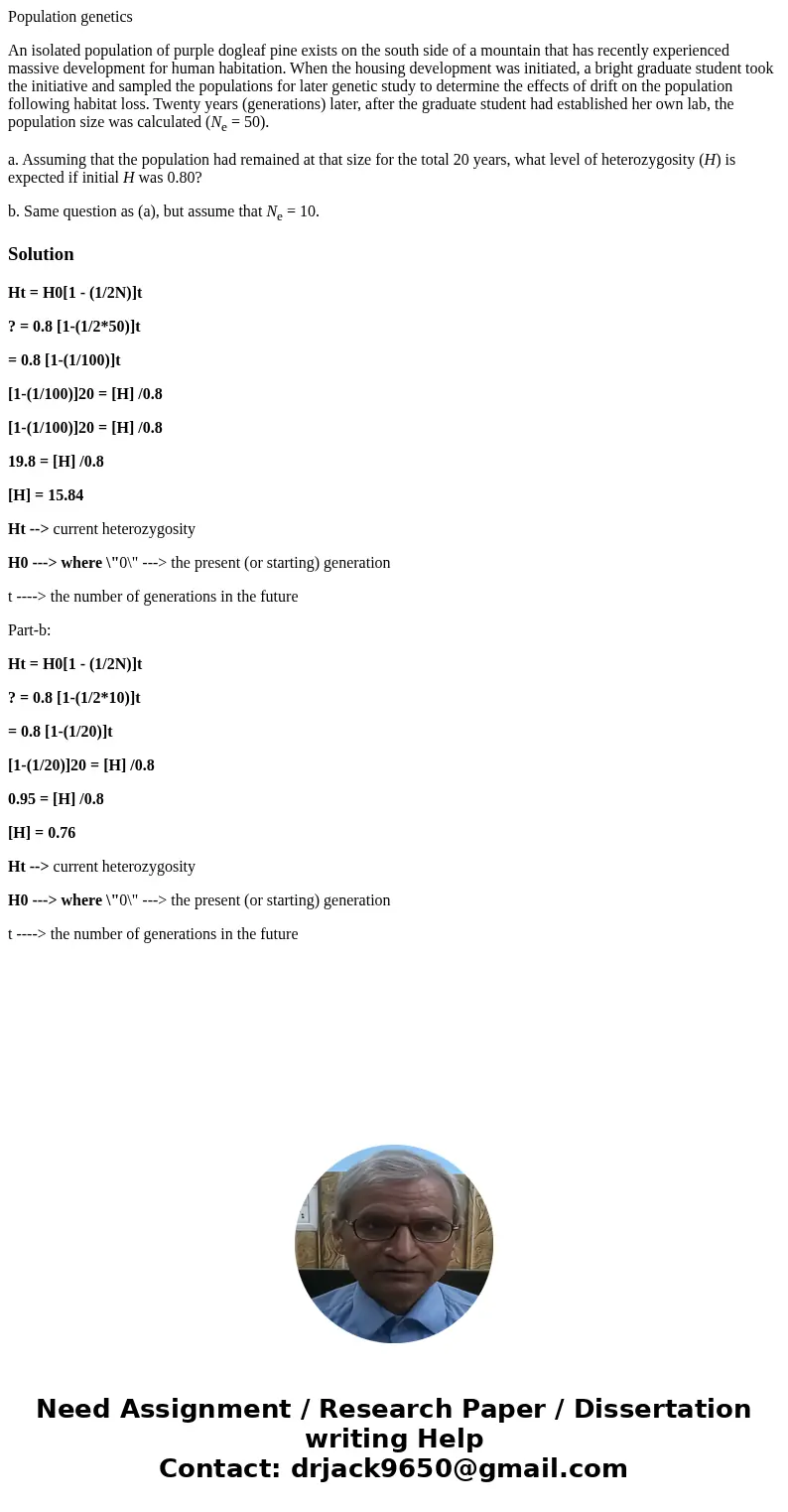Population genetics An isolated population of purple dogleaf
Population genetics
An isolated population of purple dogleaf pine exists on the south side of a mountain that has recently experienced massive development for human habitation. When the housing development was initiated, a bright graduate student took the initiative and sampled the populations for later genetic study to determine the effects of drift on the population following habitat loss. Twenty years (generations) later, after the graduate student had established her own lab, the population size was calculated (Ne = 50).
a. Assuming that the population had remained at that size for the total 20 years, what level of heterozygosity (H) is expected if initial H was 0.80?
b. Same question as (a), but assume that Ne = 10.
Solution
Ht = H0[1 - (1/2N)]t
? = 0.8 [1-(1/2*50)]t
= 0.8 [1-(1/100)]t
[1-(1/100)]20 = [H] /0.8
[1-(1/100)]20 = [H] /0.8
19.8 = [H] /0.8
[H] = 15.84
Ht --> current heterozygosity
H0 ---> where \"0\" ---> the present (or starting) generation
t ----> the number of generations in the future
Part-b:
Ht = H0[1 - (1/2N)]t
? = 0.8 [1-(1/2*10)]t
= 0.8 [1-(1/20)]t
[1-(1/20)]20 = [H] /0.8
0.95 = [H] /0.8
[H] = 0.76
Ht --> current heterozygosity
H0 ---> where \"0\" ---> the present (or starting) generation
t ----> the number of generations in the future

 Homework Sourse
Homework Sourse